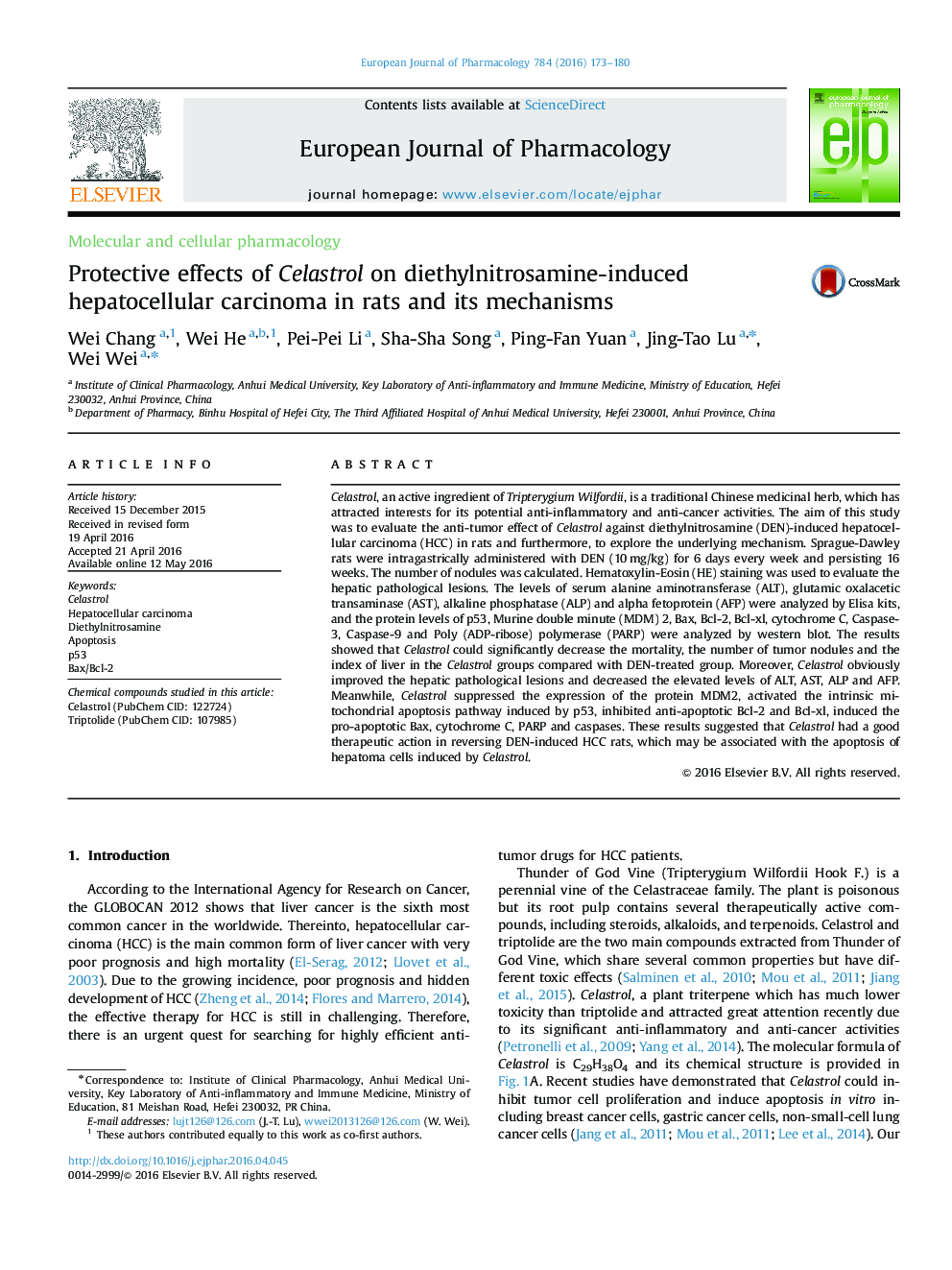| Article ID | Journal | Published Year | Pages | File Type |
|---|---|---|---|---|
| 2530899 | European Journal of Pharmacology | 2016 | 8 Pages |
Celastrol, an active ingredient of Tripterygium Wilfordii, is a traditional Chinese medicinal herb, which has attracted interests for its potential anti-inflammatory and anti-cancer activities. The aim of this study was to evaluate the anti-tumor effect of Celastrol against diethylnitrosamine (DEN)-induced hepatocellular carcinoma (HCC) in rats and furthermore, to explore the underlying mechanism. Sprague-Dawley rats were intragastrically administered with DEN (10 mg/kg) for 6 days every week and persisting 16 weeks. The number of nodules was calculated. Hematoxylin-Eosin (HE) staining was used to evaluate the hepatic pathological lesions. The levels of serum alanine aminotransferase (ALT), glutamic oxalacetic transaminase (AST), alkaline phosphatase (ALP) and alpha fetoprotein (AFP) were analyzed by Elisa kits, and the protein levels of p53, Murine double minute (MDM) 2, Bax, Bcl-2, Bcl-xl, cytochrome C, Caspase-3, Caspase-9 and Poly (ADP-ribose) polymerase (PARP) were analyzed by western blot. The results showed that Celastrol could significantly decrease the mortality, the number of tumor nodules and the index of liver in the Celastrol groups compared with DEN-treated group. Moreover, Celastrol obviously improved the hepatic pathological lesions and decreased the elevated levels of ALT, AST, ALP and AFP. Meanwhile, Celastrol suppressed the expression of the protein MDM2, activated the intrinsic mitochondrial apoptosis pathway induced by p53, inhibited anti-apoptotic Bcl-2 and Bcl-xl, induced the pro-apoptotic Bax, cytochrome C, PARP and caspases. These results suggested that Celastrol had a good therapeutic action in reversing DEN-induced HCC rats, which may be associated with the apoptosis of hepatoma cells induced by Celastrol.
Graphical abstractFigure optionsDownload full-size imageDownload high-quality image (158 K)Download as PowerPoint slide
